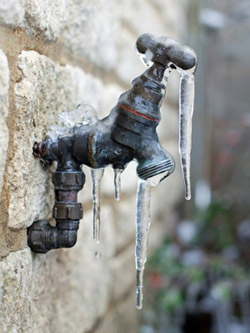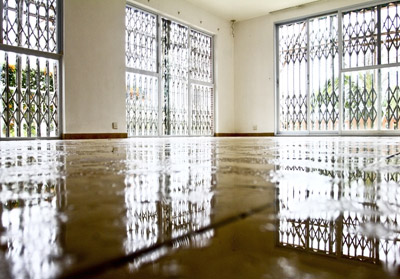Did your pipes freeze? Do you need water cleanup services? We’re available 24/7!
Call Now! 817-267-5555
 On those cold winter days and nights, your pipes are at great risk. And the damage from a broken pipe can be devestating for your home.
On those cold winter days and nights, your pipes are at great risk. And the damage from a broken pipe can be devestating for your home.
ServiceMaster Advanced Restorations water damage technicians are highly trained, experienced professionals who use the most effective innovative technology to completely dry out your home quickly and efficiently. We are on-call 24/7/365 for emergency services, so we can halt the damage in its tracks!
“A quarter million American families a year have one or more rooms in their houses flooded and their lives disrupted each winter because of pipes that freeze and break,” according to State Farm Fire and Casualty Co.
Why do pipes freeze and how do they break?
Water pipes can freeze at any time when the temperature in your home drops too low. Sometime pipes break even when you have taken care to proect your home due to unforseen circumstances, such as a loss of power.
Water expands when it freezes. When a water pipe is exposed to freezing temperatures, the water in the pipe tries to expand, causing it to push against the walls of the pipe and any nearby outlets such as valves or faucets. Enough pressure is exerted by the freezing water to crack the pipe. It won’t be immediately obvious that your pipes are cracked, as the ice in them will stay in place until it melts. It is only when water begins to flow that it becomes apparent that you have a leak.
Here are some methods to thaw out frozen pipes:
CAUTION!: Before beginning to attempt to thaw a frozen pipe, open the faucet at the end of pipe. Heating the pipe creates steam, and this can cause pressure to build up and burst the pipe if it is trapped by a closed faucet.
Method #1: Use electric heat tape on the pipe, and wait for it to thaw out. This is a good method to use because it slowly thaws the pipe, which means it reduces wear and tear on the pipe itself.
CAUTION!: For mobile homes, be sure to use only heat tape specifically certified for use in them by a nationally recognized testing laboratory. Be careful never to wrap the heat tape back over itself. This could cause the heat tape to overheat and start a fire.
Method #2: Wrap the pipe with several layers of cloth or toweling and pour hot water over the cloth / toweling. Repeat several times until the pipe is unfrozen.
Method #3: Set a heat lamp on dry ground a foot or more away from the pipe, and point the lamp at the pipe. Use aluminum foil to cover the materials around the pipe so they are not damaged during this treatment. Direct a heat lamp on the pipe itself. Place the lamp at least a foot away from the pipe. Cover adjacent areas with a layer of aluminum foil so the heat does not scorch these materials. We recommend plugging it into a ground Fault Circuit Interrupter (GFCI) outlet to prevent a potentially hazardous mishap.
CAUTION!: Do not apply direct heat of any sort to a frozen pipe located near a gas line as this can be extremely dangerous. Call a professional for help.
 Method #4: Your run-of-the-mill handheld hair dryer can also be used to thaw the pipe. Stand on dry ground, plug the hair dryer into a GFCI protected outlet, and run the blow dryer slowly along the frozen portion of the pipe.
Method #4: Your run-of-the-mill handheld hair dryer can also be used to thaw the pipe. Stand on dry ground, plug the hair dryer into a GFCI protected outlet, and run the blow dryer slowly along the frozen portion of the pipe.
When the pipe thaws, it will be immediately apparent because water will begin to trickle out. Let the water run for several minutes to ensure that any remaining ice has been dislodged, then close the faucet and inspect the pipe to see if there are any leaks or cracks.
CAUTION!: Do not use a propane torch to thaw out frozen pipes. Do not use a propane torch even if it has a fire spreader attachment. This is not only a fire hazard, bit it’s also a quick way to destroy your plastic plumbing pipes
